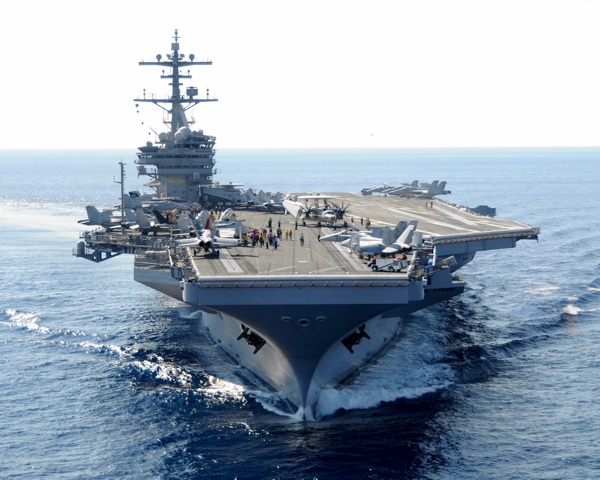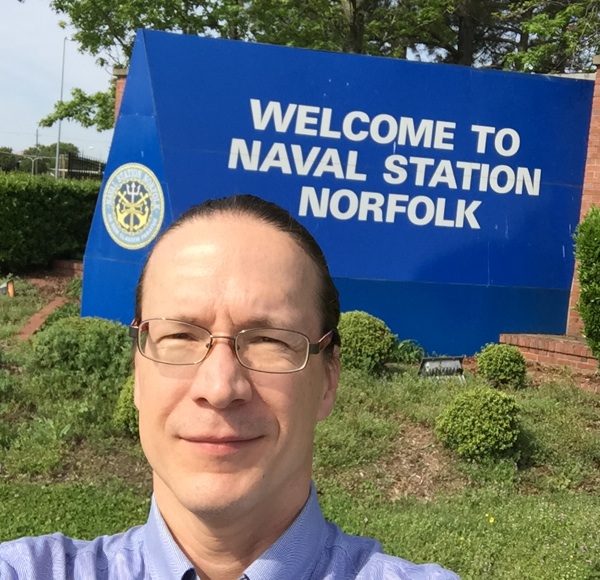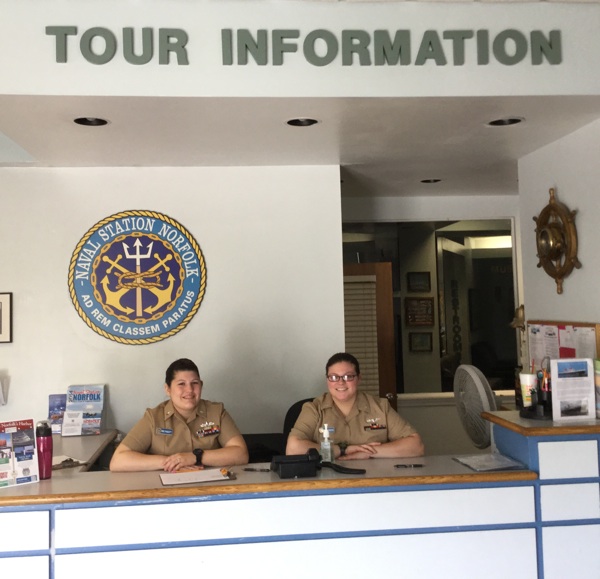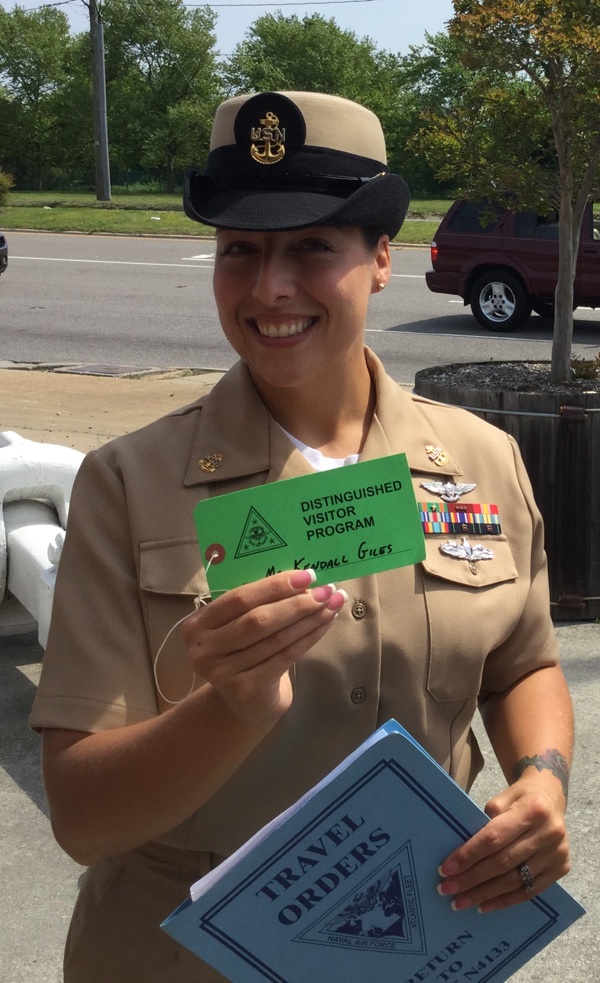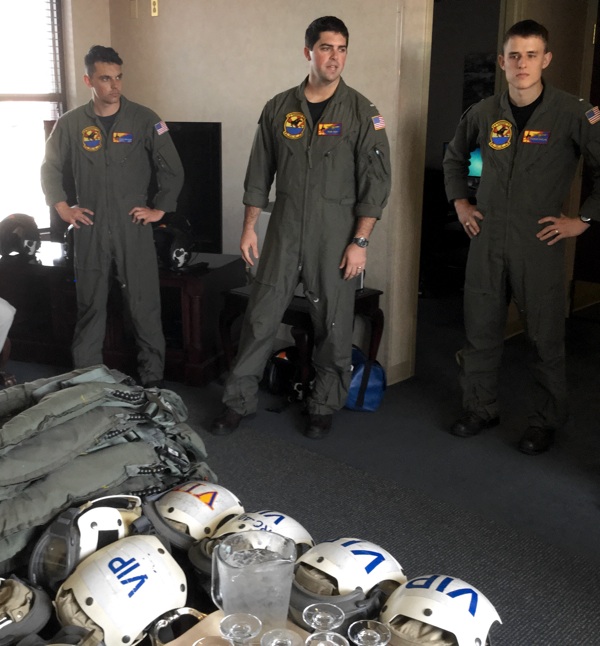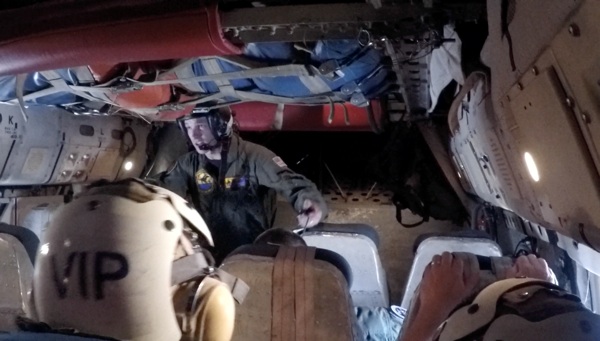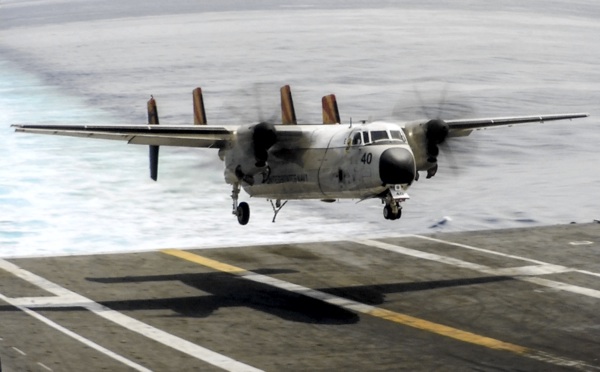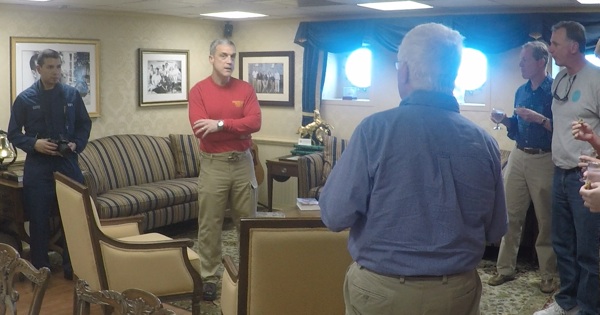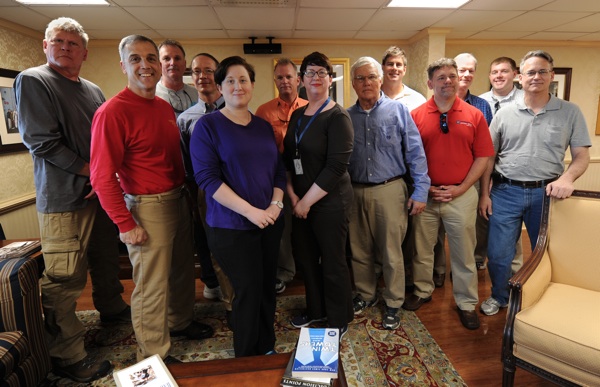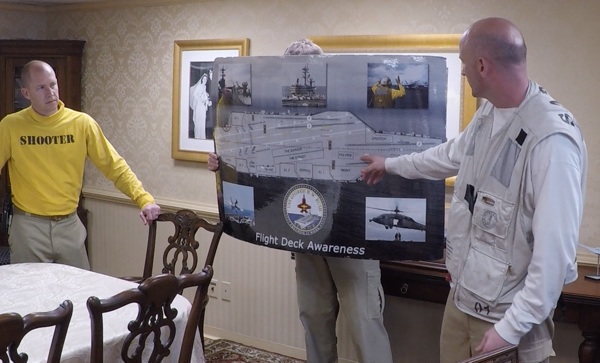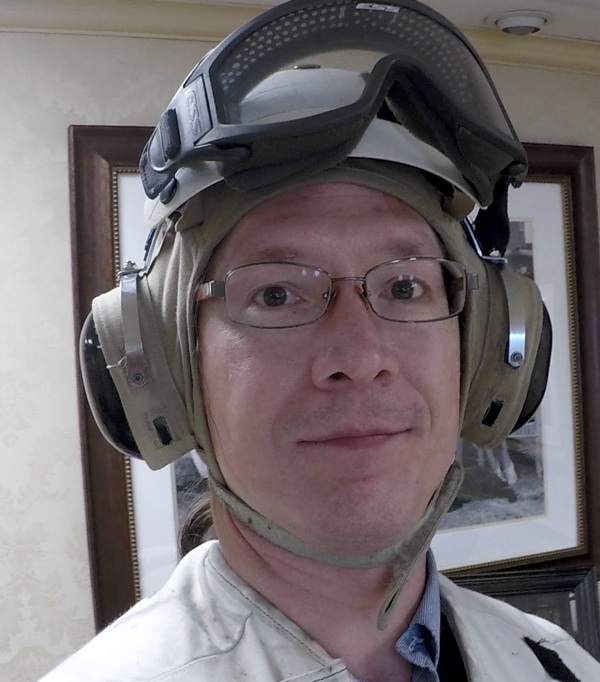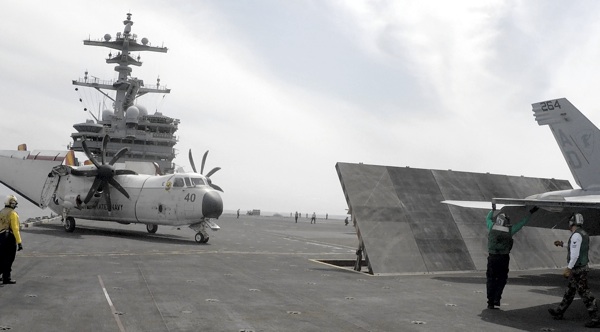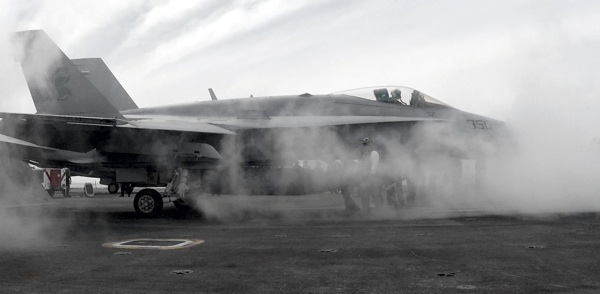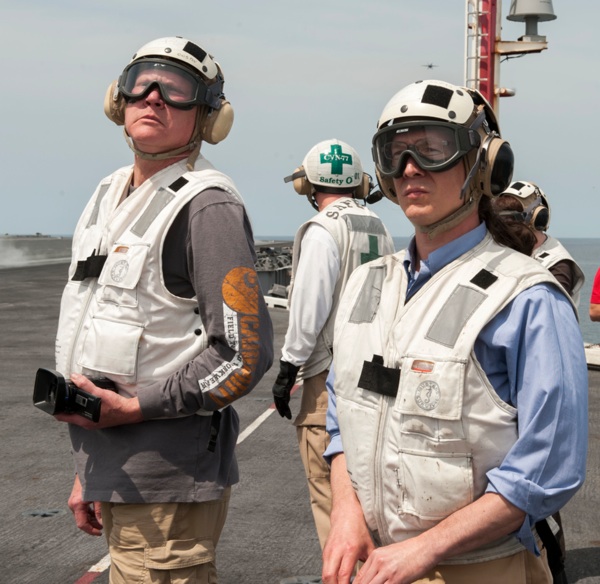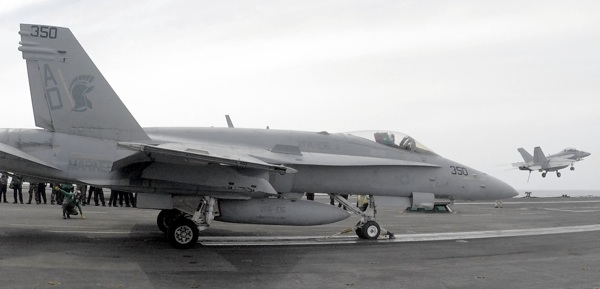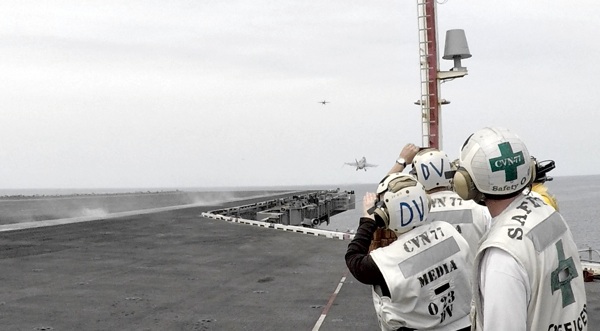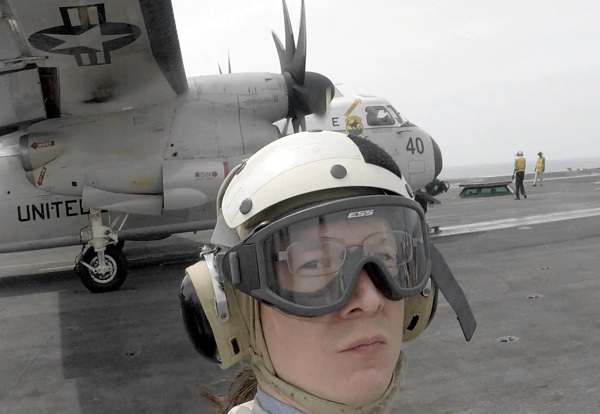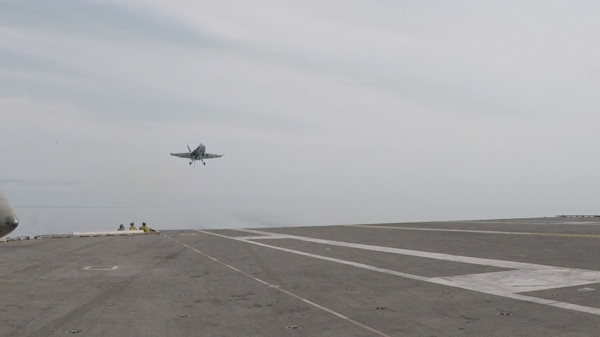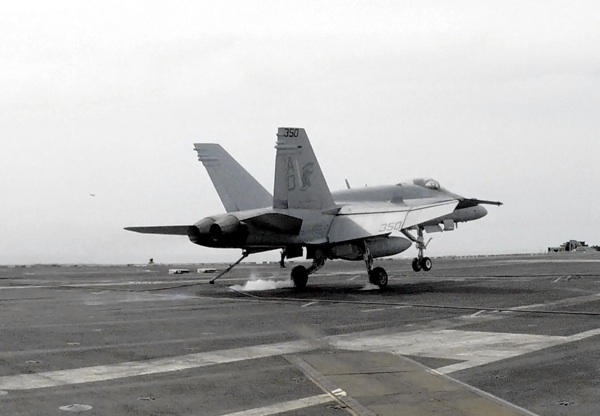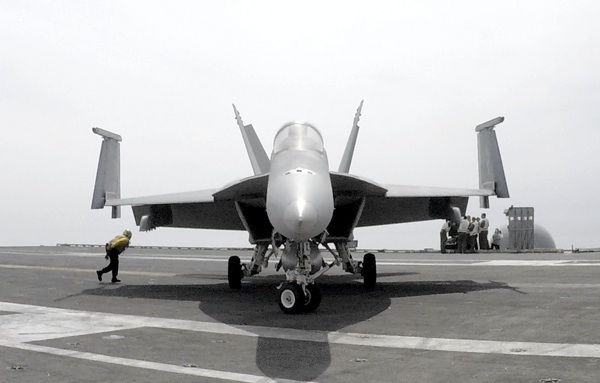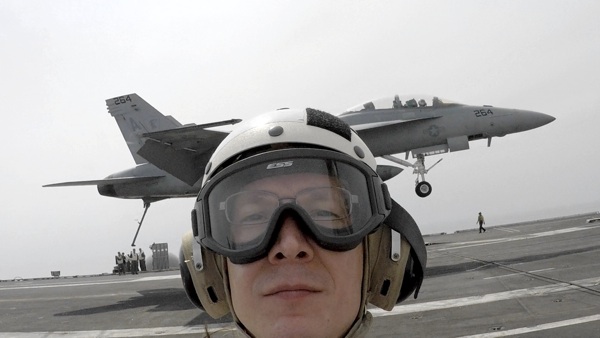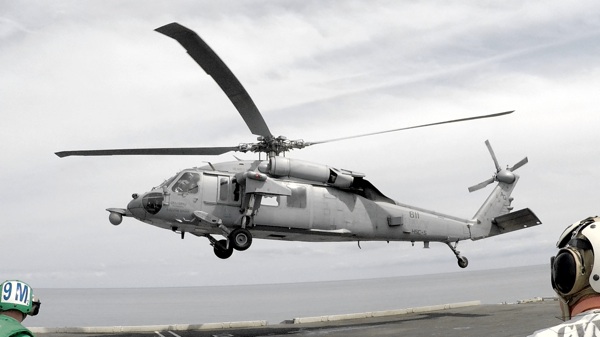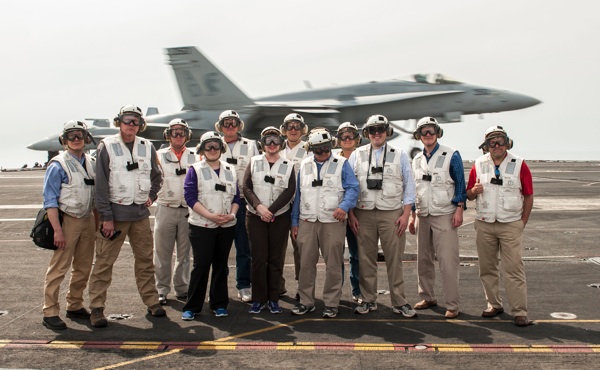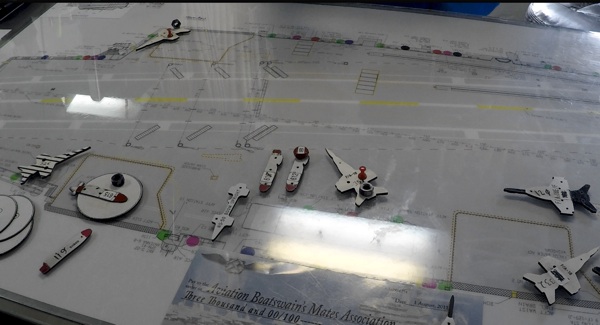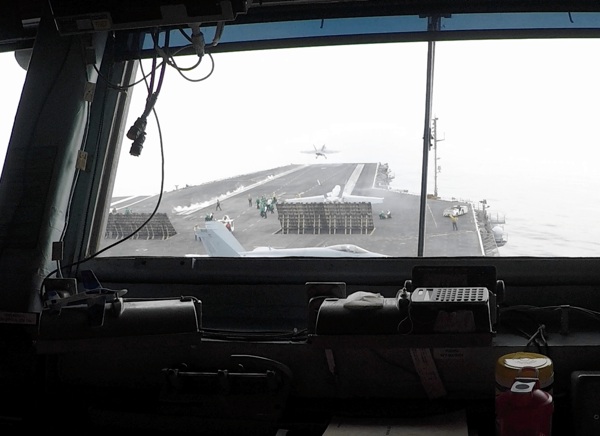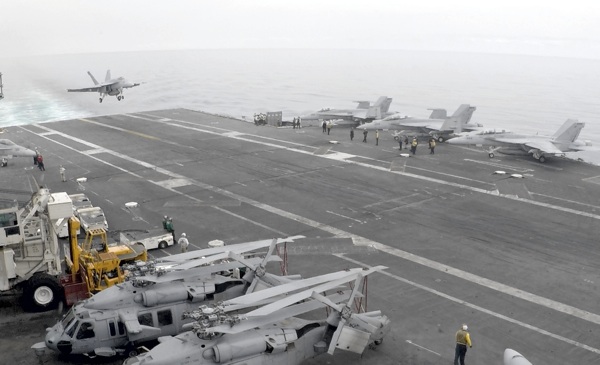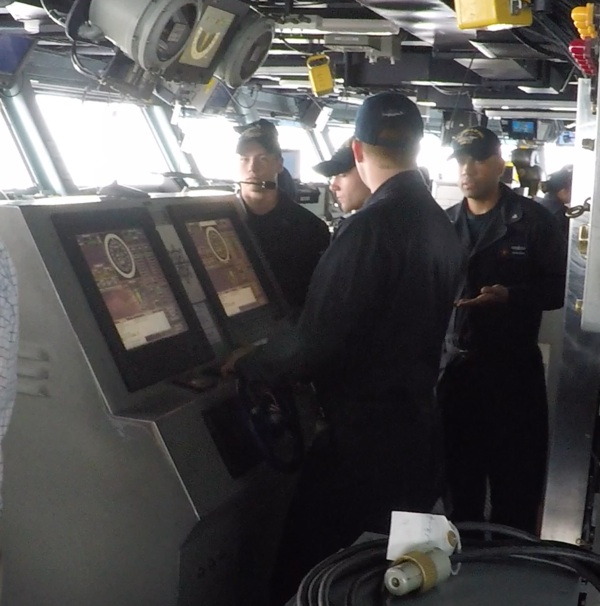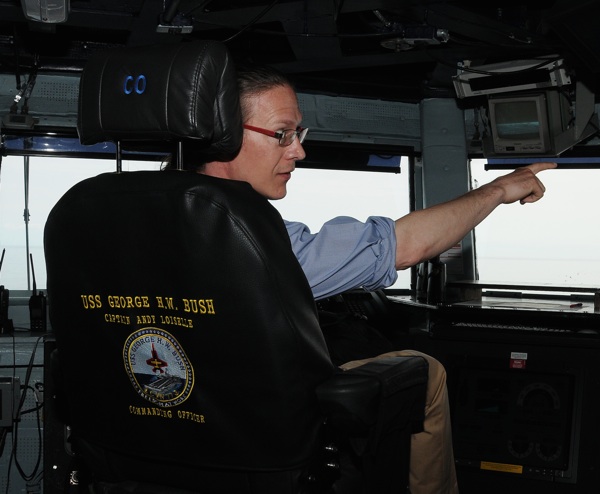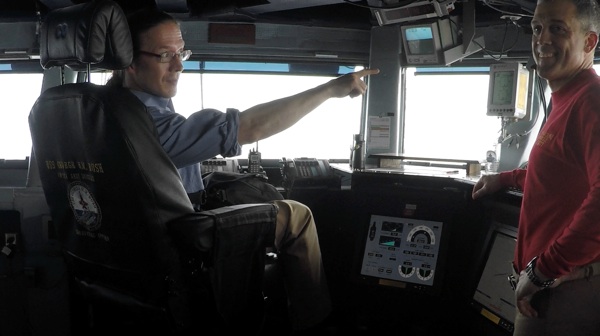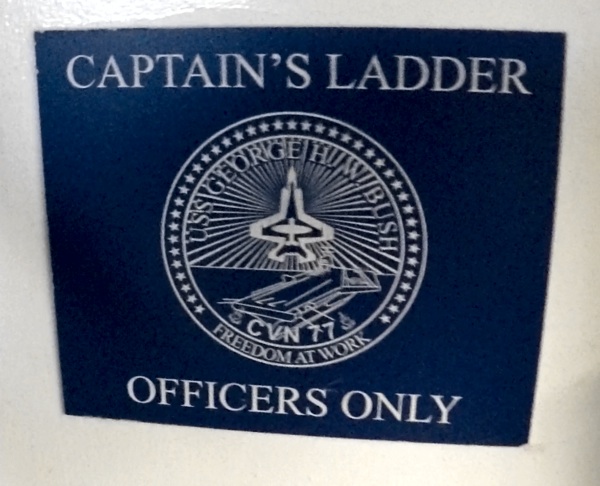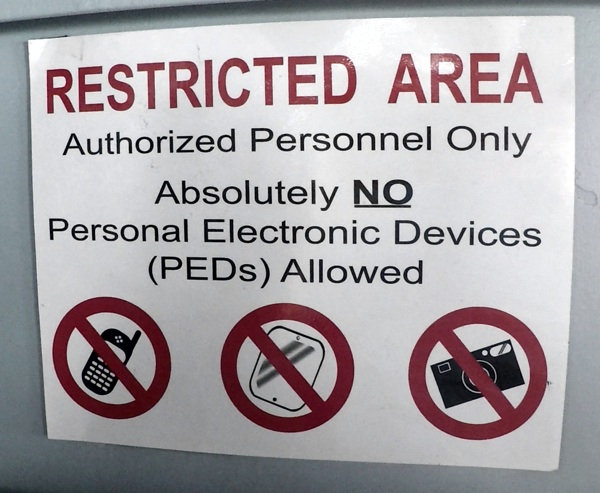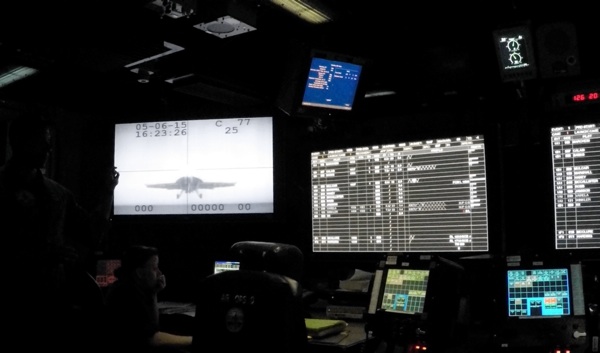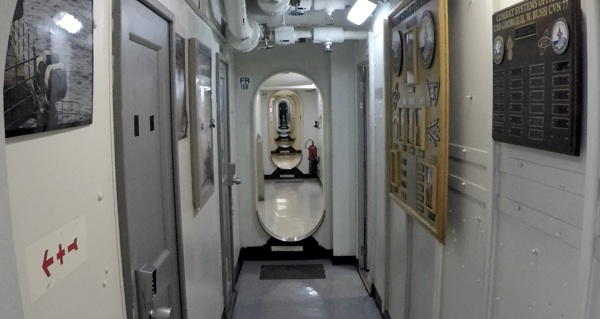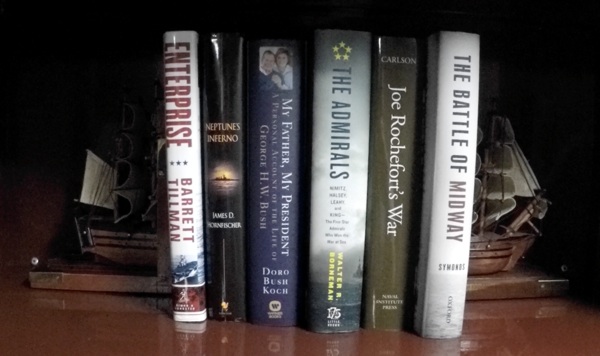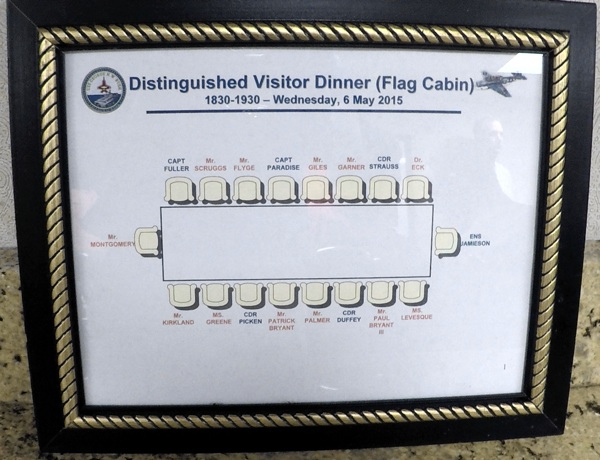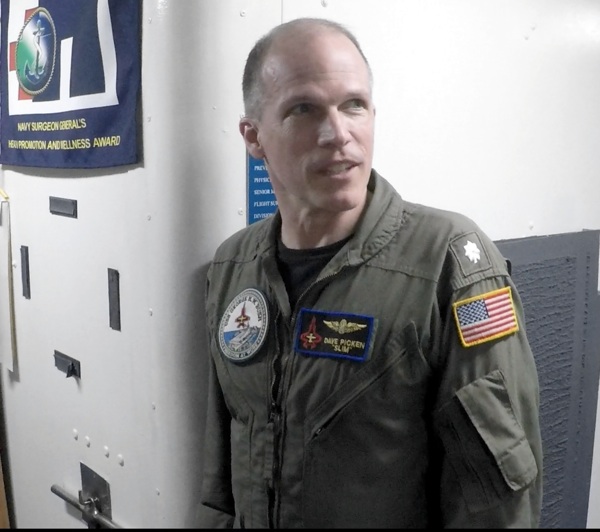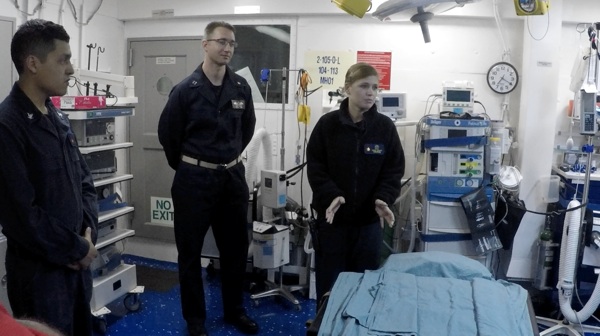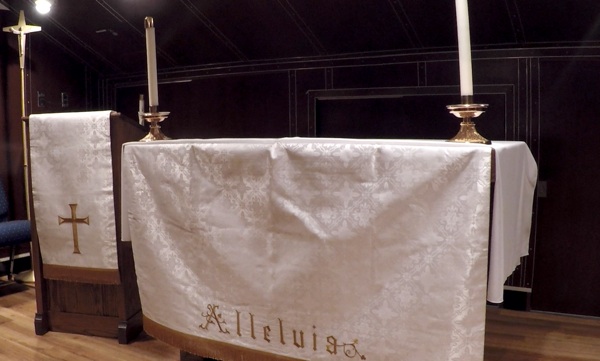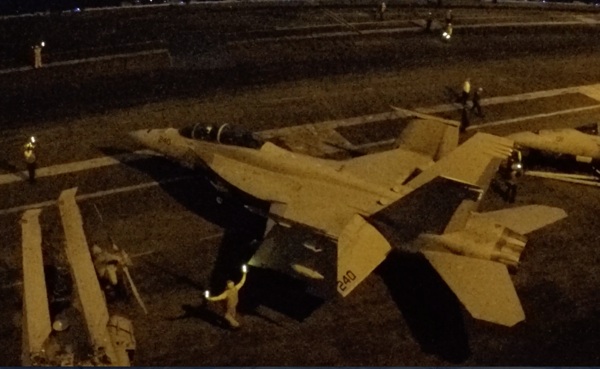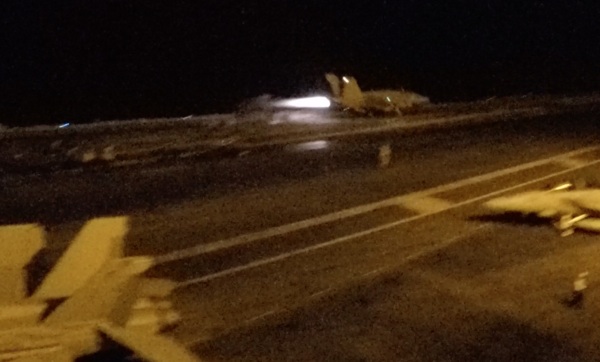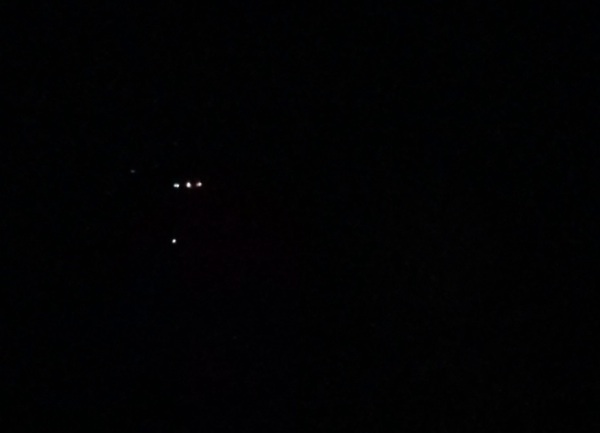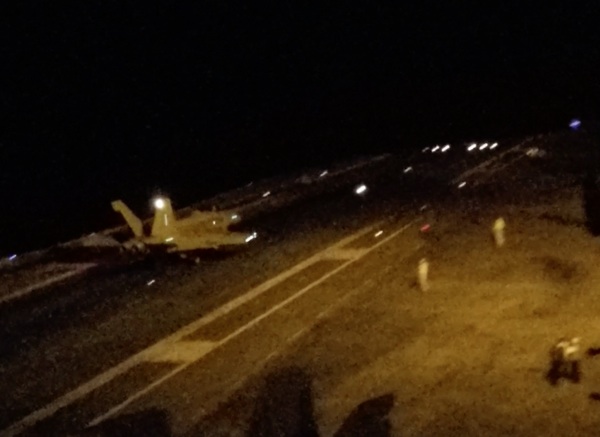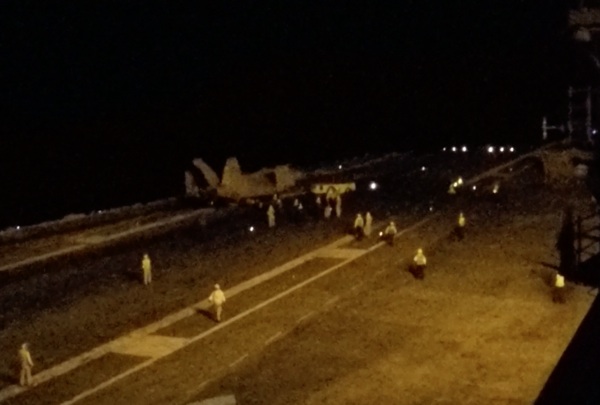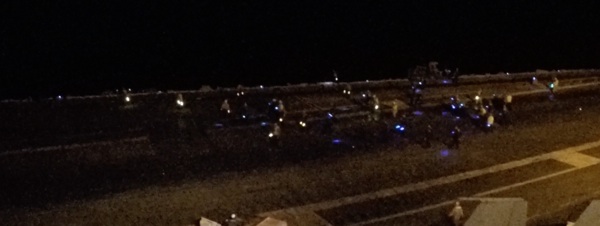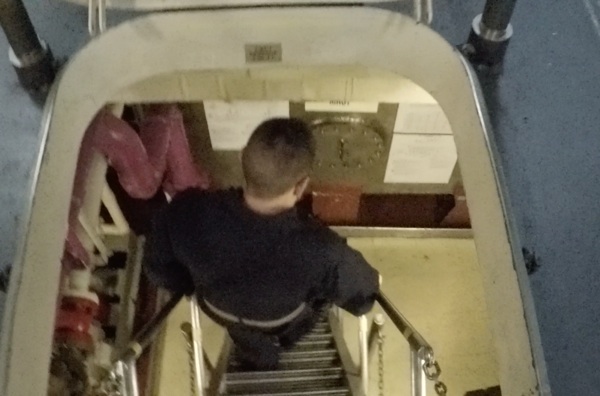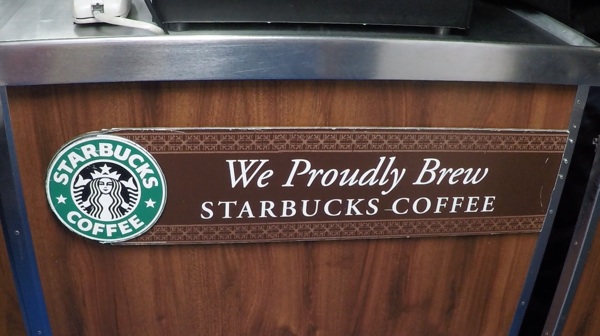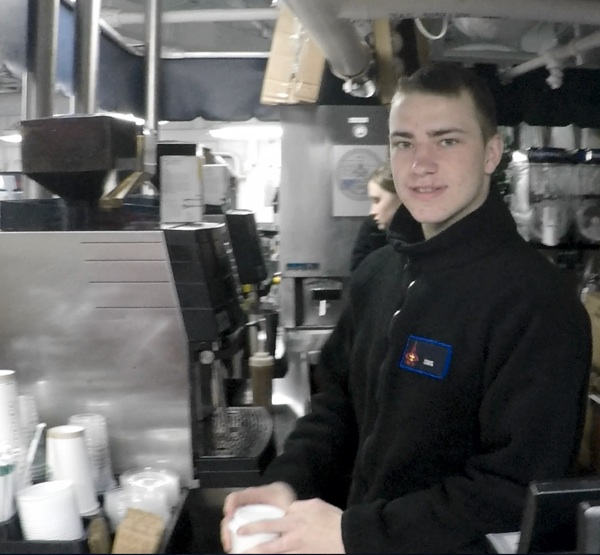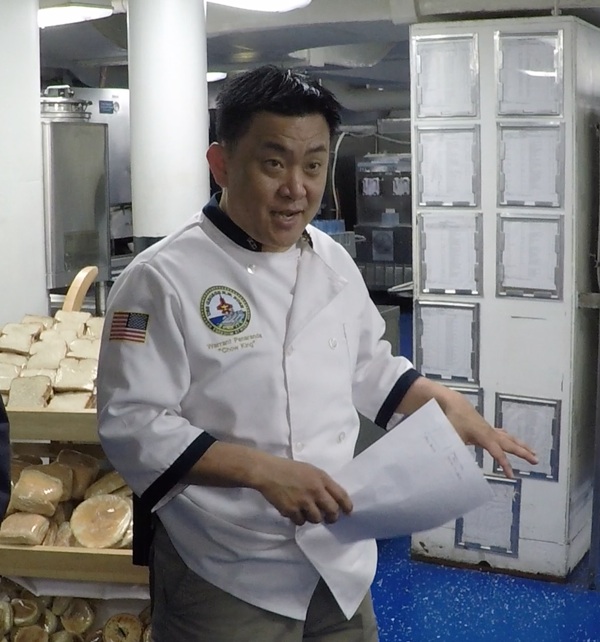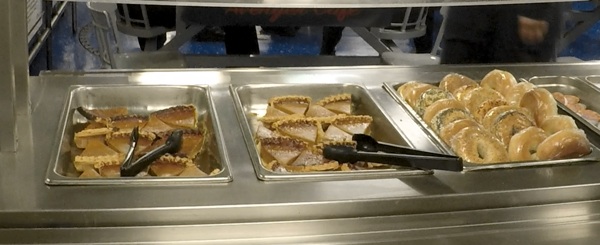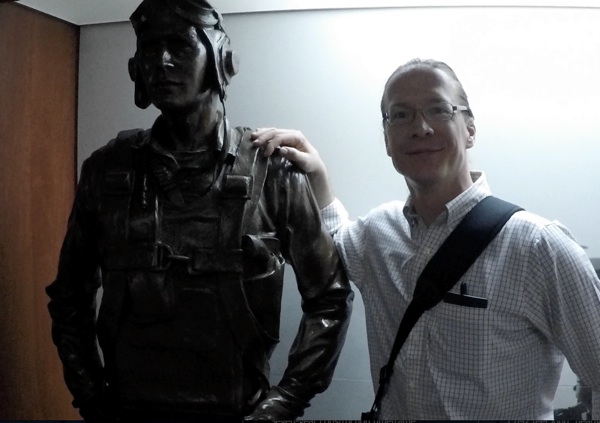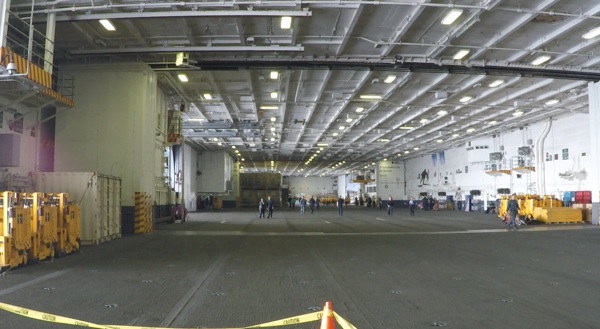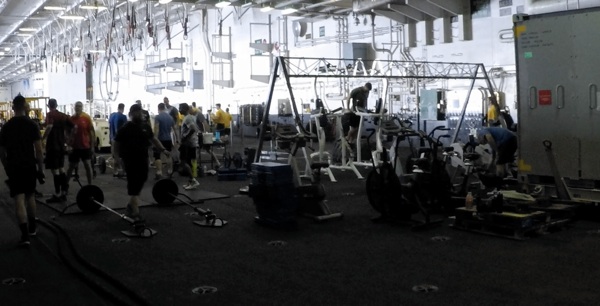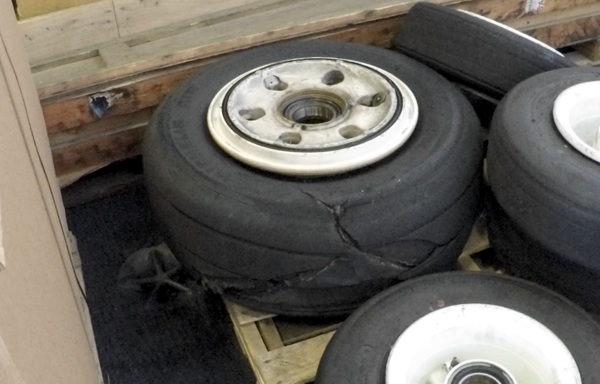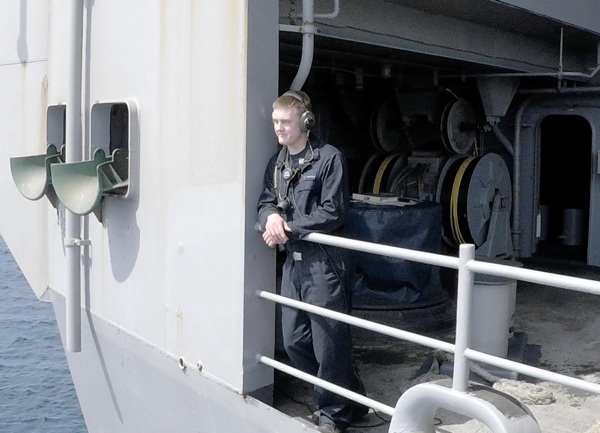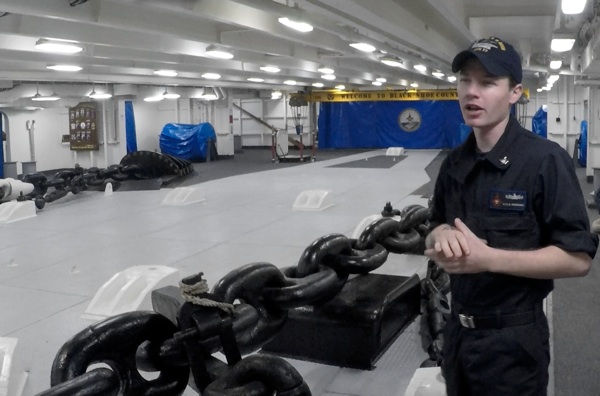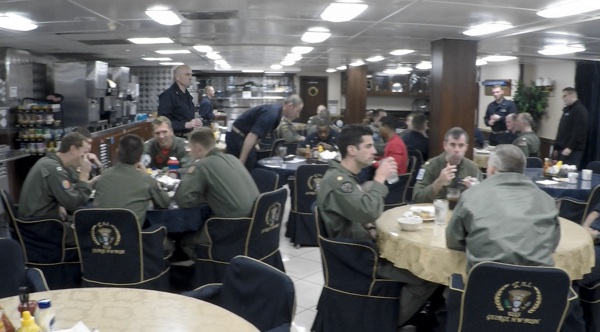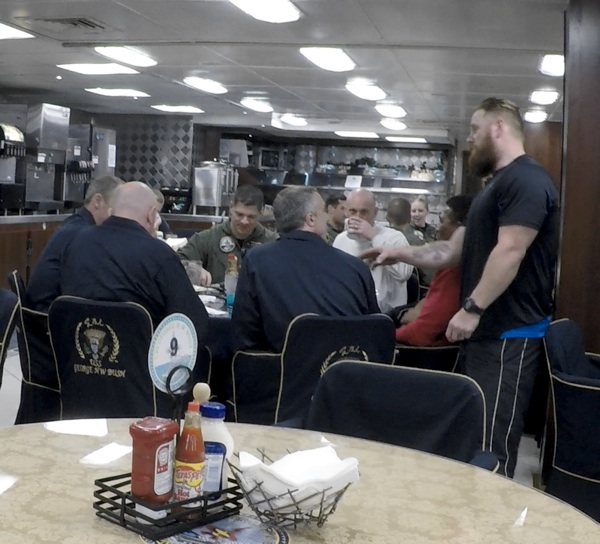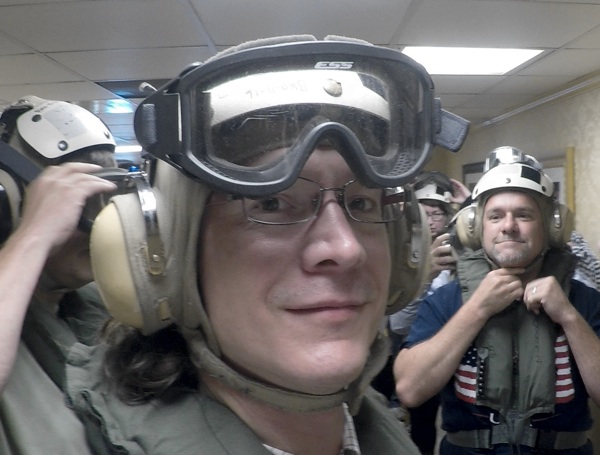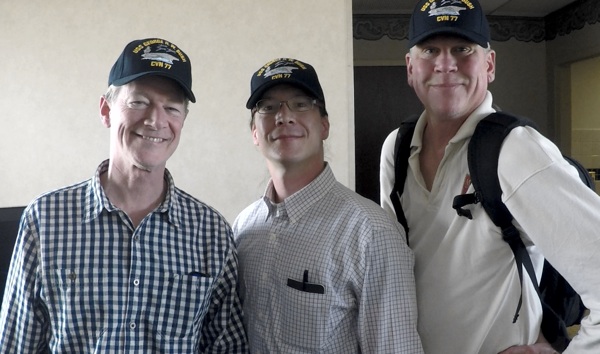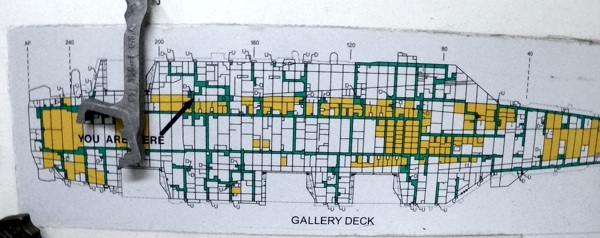On May 6, 2015 I had the immense honor of being included among twelve Distinguished Visitors who served a two-day tour of duty on an embark aboard the USS George H.W. Bush aircraft carrier. The time went by so fast it only seemed like we were gone five minutes.
I’ll try to summarize what we saw and experienced on-board, but I know it will be difficult to capture what a truly incredible experience it was. Moreover, and most importantly, it will be difficult to express just how proud I am of the US Navy and the men and women who serve–of all the things I’ll show and talk about below, please keep in mind that the Navy’s most important asset is its people. To a man and woman, each person we met on-board exhibited more pride, professionalism, and purpose than in any organization I’ve previously seen.
But let me first give special to thanks to my sponsor, Dennis Hall. The selection process can take from three months to three years starting from the time of nomination to vetting by the Navy and finally selection and embarkation to a ship at sea. Dennis Hall, founder of Avere Group LLC, made my embark possible via his nominating me the US Navy. He is neither an employee of nor contractor with the military. He does this as a pay-it-forward in tribute to service members, veterans, allies and their families. Dennis Hall initially submitted my nomination to the Public Affairs Officer of the US Navy Commander, Naval Air Forces, US Atlantic Fleet. The Public Affairs Officer selected me for the Distinguished Visitors Program. Dennis Hall may be e-mail contacted at: ContactDennisHall@gmail.com. Note that the word “Contact” is part of his e-mail address. His mobile phone number is 916-430-5263. His blog for Avere Group LLC is www.AvereGroup.Wordpress.com. On Twitter he is @averegroup.
According to Wikipedia:
The USS George H.W. Bush is the tenth and final Nimitz-class supercarrier of the United States Navy. She is named for the 41st President of the United States and former Director of Central Intelligence George H. W. Bush, who was a naval aviator during World War II.
The USS George H.W. Bush, commissioned in 2009, is one of the largest, fastest warships in the world. It is about as long as the Empire State building is tall. It has two nuclear reactors, which provide about 23 years worth of energy for the ship without needing to be refueled. It’s top speed is 30+ knots, it has enough food and supplies to operate for 90 days, and it is home to about 6000 Navy personnel.
It all began at the Navy base Naval Station Norfolk.
Where does one go on a Navy base to start your tour? To the Tour Information Office, of course.
By the way, they said I looked like the actor from Highlander.
This is Chief Petty Officer Stiles. She was my sponsor’s point of contact for nominating us for the embark. She collected our Next of Kin forms and made sure we got to where we needed to be.
Our first stop was on the base’s airfield, where we had a pre-flight briefing. We also had to put on flight vests and protective helmets, complete with goggles and ear muffs. The ship was somewhere in the Atlantic and we were going be flown there by a C-2 Greyhound carrier on-board delivery (COD) aircraft.
Here we are on the C-2 Greyhound. Let me just note that this is not the Princess Airlines. There were no in-flight movies, beverage service, or reclining seats. But there were exposed low-hanging metal beams, wiring, and sharp edges. Instead of a safety video, this pilot prepped us for the flight and how to assume the correct position in our seats for the tailhook landing so that we didn’t die.
Here’s a picture of our C-2 Greyhound just fractions of a second before nailing a perfect tailhook landing aboard the USS George H.W. Bush (CVN 77), a feat which entails going from about 105mph to 0mph in less than 2 seconds.
Wakey, wakey, eggs and bakey.
Also, note the churn in the ocean behind the aircraft carrier — that ship was really moving through the water, propelled by four bronze propellers, each 21 feet across and weighing more than 30 tons.
This is Captain Andrew Loiselle, the commanding officer of the ship. He welcomed us on-board in this President George H.W. Bush-themed stateroom and fed us cookies. The cookies were delicious.
We took a group photo with the Captain.
Next we had a safety briefing about all the ways you can die on an active aircraft carrier flight deck. He pointed out the one safe place to stand on the deck, but I missed it because I had gone back for another cookie.
And here’s me thinking, “I hope that safety officer didn’t say anything important, because I can’t hear a thing while wearing these ear muffs and munching cookies.”
The flight deck of an aircraft is like a beehive–a rather large beehive with lots of crew, coordinated activity, and big planes.
Here we are towards the bow of the ship, where planes take off via catapult launch.
The tall structure in the back of the picture is the ship’s Bridge, and in front of that is a C-2 Greyhound in line for takeoff. Note how its wings are folded back to create a narrow profile for maneuvering on the flight deck. Though the flight deck is large–about 4.5 acres in total, when you stick lots of people and planes there, the space suddenly seems quite compact.
On the right you can see a blast door and the rear of an F-18 preparing for takeoff. Once that F-18 takes off, the blast door will lower, the C-2 will move forward, the blast door will raise, and then the C-2 will takeoff.
Here’s an F-18 being prepped for takeoff. There is a crew who thoroughly checks over all aspects of the plane, the status of other planes on the flight deck, and the readiness of the pilot. Once everything checks out, the plane is given the OK to take off. There are two runways set parallel on the main part of the forward flight deck. The smoke in the air is from the launch of the F-18 that was beside this plane.
Here Layne Montgomery and I are watching something with intense focus — probably a big spinning propeller coming towards us.
Here is an F-18 ready for take off-they have just verified that the front wheel is properly hooked into the catapult mechanism. The catapult will explosively pull the aircraft along the runway, essentially throwing the plane off the bow of the ship. Once in the air, the pilot will grab the stick and fly the plane.
In front of F-18 you can see another F-18 in the air. This plane has missed a tailhook landing and is taking off the runway that runs at about 10 degrees from the two main runways. This off-axis runway allows for take offs as well as missed landings to happen at the same time.
And here you can see the result of two successful F-18 takeoffs, one right after the other. They can launch about 10 aircraft every seven minutes.
And here you can see me wondering if I had finally found that one safe spot on the flight deck. Given the huge spinning propeller of the C-2 Greyhound right behind my head, I now think not.
Here’s the view from the rear of the ship (stern). You can see an F-18 on approach for a tailhook landing.
We were fortunate to see many catapult takeoffs and tailhook landings this day–pilots were undergoing “Carrier Qualifications”, which means they were training how to takeoff from and land on an aircraft carrier. Just because you learned how to fly on land, where the landing strip is large and doesn’t move, doesn’t mean you know how to land on a tiny landing strip that is moving in three dimensions.
It was the first time trying to land on an aircraft carrier for some of these pilots.
There are three arresting cables (two inches diameter of twisted steel) that span the width of the landing strip on this carrier (other carriers have four cables). The goal in a tailhook landing is to have your plane’s tailhook catch one of the arresting cables, which are slightly raised off the deck by metal spars.
In the picture, the first arresting cable is off frame to the left and you can see that the plane’s tailhook has just caught the second arresting cable.
The cable is attached to two hydraulic cylinders, which feeds out extra cable stored below the deck as the plane passes, but also pulls the plane to a halt–a landing plane goes from about 150mph to 0mph in less than two seconds.
By the way, the second cable is the preferred cable for pilot’s to aim for. Aiming for the first cable means the pilot must come in a little low, which runs the risk of the pilot crashing into the stern of the ship. Aiming for the third cable means the pilot must come in a little high, which can result in an overshoot, forcing a takeoff and go around. Earlier we saw a picture showing a plane doing just this.
There are four aircraft elevators, each more that 4000 square feet in size, which bring the planes up to the flight deck from the hanger below. Here we see an F-18 with its wings folded for maneuverability on the flight deck.
A friend said, “Don’t look now but it looks like there’s a giant hornet behind you.”
F-18 Hornet, get it?
Due to the design of the USS George H.W. Bush’s flight deck, they can conduct helicopter operations at the same time they are doing tailhook landings and catapult launches.
Finally, we got a group photo of all the DVs, with an F-18 screaming past as it comes in for a tailhook landing.
In Flight Deck Control, the Handlers are responsible for tracking all aircraft on the flight deck. With nothing but the finest technology available to them, note the system that they prefer to use–the picture shows the table around which the Handlers work–on the map of the flight deck the Handlers place cutouts of the various aircraft and they move these cutouts around the map as the aircraft moves on the flight deck.
Just off frame is a tray which contains things like nuts, pins, jacks, and washers. Some of the plane cutouts have these items placed on them. These accessories have specific meanings and at a glance tell any Handler the status of that aircraft. A plane cutout with a purple nut? That plane needs fuel. A plane cutout with a jack? That plane needs to return to the hanger for maintenance, where they will lift the plane in the air like your car at the mechanic’s garage.
Can you guess what it means if a plane cutout has a washer on it?
This is a view of the bow of the ship from the Bridge, which is the room from which the ship is commanded.
And this is a view of the stern of the ship from the Bridge. This pilot is coming in for a touch-and-go.
He’s got his head turned away from the camera, but this guy, with his hands on a steering wheel, is the ship’s helmsman–he’s the one who actually steers the entire aircraft carrier. I asked him how old he was–23 years old. What were you doing when you were 23?
By the way, that wheel turns two rudders, each 29′ x 22′ and weighing 50 tons.
This one time on the Bridge, when Captain Loiselle wasn’t looking, I jumped into the Captain’s chair and began issuing orders.
I can’t say that I changed the course of history that day after my brief tenure in the Captain’s Chair, but I can say that I am very grateful the Captain didn’t throw me into the brig. Here’s Captain Loiselle looking amused at my toothless mutiny.
Of course I used this ladder with permission.
And of course I heeded all signage.
It was dark here, but we toured Air Operations, which is responsible for all carrier air traffic control, airspace management, and COD logistics. I think they did a few other things as well, but all I could focus on was the fact that they still run Windows XP.
This is a typical hallway in an aircraft carrier. Can you imagine trying to find the bathroom at night when the lights are out? From experience, it’s more difficult than you can imagine.
Also, note the oval doorways you have to step through–I found out why they call the sharp metal barriers you have to step over “knee knockers.” They also increase the difficulty level of reaching the bathroom safely in the middle of the night.
These were the books on the bookshelf in my room. My roommate was Layne Montgomery, who is a winemaker and runs m2 Wines. It’s good to have a winemaker as a roomie, though unfortunately we were on a dry ship.
It was a real treat to eat dinner with much of the ship’s senior leadership.
This is Dave “Slim” Picken, the ship’s Chief Medical Officer. He is in charge of all medical operations aboard the USS George H.W. Bush, as well as on any ship that joins aircraft carrier in a flotilla operation.
Note his call sign. Pilots usually have a call sign given to them that reflect some incident or behavior. If a pilot won’t tell you the story behind their call sign, you can be sure that his or her story is an embarrassing doozy.
Almost all of the carrier’s leadership are pilots–the reason is that it is easier to take a pilot and then train them for some other duty, like running a nuclear reactor or ship, than to try to take someone from another field and then train them to be a pilot. This also gives the aircraft carrier’s leadership intimate insight into the carrier’s prime mission: to serve as a naval base of military flight operations.
This is the ship’s operating room. Left to right are a medical technologist, the anesthesiologist, and the ship’s chief surgeon. Here they can perform most any procedure you would find in a land-based hospital.
Most common injury? Broken or lacerated fingers/hands — there are a lot of heavy metal objects on-board an aircraft carrier — such as hatches — and a moment’s distraction can result in injury. But safety and education are also the responsibilities of the ship’s doctors, and so if they detect a wave of common injuries, they will craft a safety campaign to help prevent future such injuries.
There is a small non-denominational chapel which serves as a quiet place for meditation or contemplation, and as a place where regular religious services are held. Note that the priests there (one Catholic and one Protestant) try to assist any sailor with their religious or spiritual needs. Also, the priests are bound to honor the privacy of a sailor’s confession.
Adjacent to this room is a small library, where sailors can check out books, games, and puzzles, and can use computers.
As you can imagine from the above flight deck pictures, landing a plane on an aircraft carrier is one of the most difficult tasks a pilot has to do.
Except, landing a plane on an aircraft carrier at night is even harder.
In the above picture, crew with flashlights are guiding an F-18 from its parked position to the catapult launch area.
Here an F-18 is in mid-catapult launch from the off-axis runway.
Here’s an F-18 approaching the runway.
Note that for night landings, the ship turns off all lights except for a few lights to outline the landing strip. Needless to say, it’s quite dark.
Remember how I said landing on an aircraft carrier at night was difficult? For some of these pilots, this was their first time attempting this feat.
And here’s a successful night tailhook landing.
But not all landings were successful. This pilot landed off centerline, blowing one of the plane’s tires when it hit one of those metal spars that support the arresting cable. The pilot was not injured, but the plane had to be towed from the runway.
And all flight operations were suspended so that the crew could sweep the entire flight deck with their flashlights for pieces of metal and tire that could be sucked into another plane’s jet intake.
As we toured around the ship, we climbed through many, many hatches like this one, and up and down steep stairs like these.
And yes, in case you were wondering, there is a Starbucks on the USS George H.W. Bush.
Coffee is served by smiling, highly-caffeinated crew members.
This is “Chow King” — he’s responsible for all food served on-board.
On the USS George H.W. Bush, they serve 18150 meals per day — 6000 people on-board line up to eat, three times a day. Not only that, but they must maintain enough food and supplies to operate for 90 days. And when they travel in distant waters, a network of fresh food and supplies must be coordinated with foreign nations and companies.
Mmmmm, pie.
The USS George H.W. Bush is named of course after our 41st President of the United States, George H.W. Bush. Bush had a distinguished career, starting in the Navy — he was the youngest Navy Pilot at the time, where he flew torpedo bombers during World War II. He also survived being shot down during combat action. Later he was a Congressman in the U.S. House of Representatives, was U.S. Ambassador to the United Nations, was Director of the Central Intelligence Agency, Vice President of the United States, and President of the United States.
I’m standing next to a life-size statue of Bush — he is a tall fellow.
Here are the ship’s three main hanger bays, where the planes are stored and maintained. You don’t see any right now because they are all above on the flight deck or in the air for Carrier Qualifications.
That extra room also allows for fitness training. Here senior ship leadership leads by example, training out in the middle of the hanger.
By the way, here’s that blown tire from the F-18 that mis-landed during a night tailhook landing.
Life on-board can be physically and mentally demanding. With 6000 people on the ship it can be difficult to even find “alone” time where one can think in private. Here we are at the stern of the ship — there’s no more ship left at this point — and this sailor has retreated here to listen to an audio book or music in peace.
Except that I happened along and took his picture. He was nice and didn’t throw me overboard.
I can see why that sailor came down here — except for the tourists, you see nothing but open water.
We are now towards the bow of the ship, where they keep the ship’s anchors and chains. This sailor is explaining all the care and procedures needed to keep the anchors and chains in good working order. These particular anchor chains came from the USS Independence, and each link weighs over 350 pounds. After each use, each link must be repainted, as well as the entire floor of the anchor room, to keep everything clean and orderly.
We usually ate in one of the wardrooms where the officers take their meals. I thought the food was good!
The burly guy with the beard who is standing at the senior leadership’s table and giving them a hard time is the Fit Boss. He’s a Marine who is stationed on-board the ship and whose job it is to keep everyone fit. This includes the Captain, and the Fit Boss is about the only person on the ship who can yell at the Captain (about health and fitness matters) without consequences. Since what you eat is of course related to health and fitness, the Fit Boss monitors what the officers eat as well as their workouts. He takes his job very seriously. No Twinkie for you, Captain!
And here we are, donning headgear and safety vests for one last adventure. This time we will experience a catapult launch aboard a C-2 Greyhound and land back at the Navy base.
Back on land, here is David Scruggs, me, and Layne Montgomery.
I wish to thank Chief Petty Officer Stiles, who was Dennis’s main Navy contact and interface.
And I have to thank Ensign Mack Jamieson, who coordinated our tour schedule and patiently guided all the DVs to all of our various stops in, on, and around the ship.
With nine floors above the flight deck and eight below, the USS George H.W. Bush may seem like a huge place. Well, it is huge — 47,000 tons of steel, 1,000,000 pounds of aluminum, 30,000 light fixtures, and 1,600 miles of cable and wiring — the ship is about as long as the Empire State Building is tall. But it is also home to the 6000 highly trained and dedicated men and women who work there.
What an amazing adventure. Thank you, men and women of the USS George H.W. Bush, for your service and for having me on-board.
